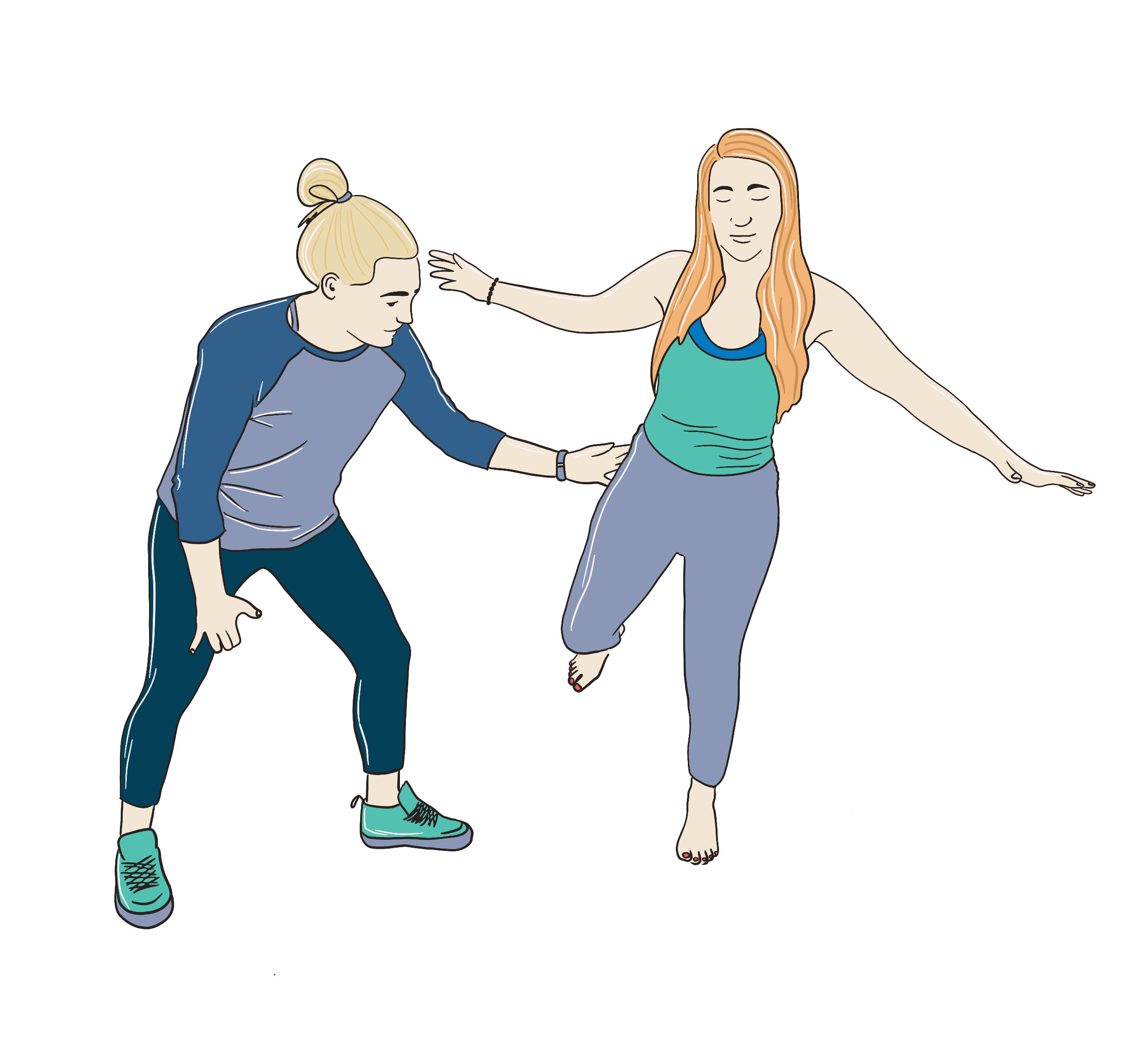FITNESS FOCUS WITH...
Jo Pollard
Physio to Team GB’s skiers and riders, Jo Pollard shares six balance and body awareness exercises that will revolutionise your skiing and snowboarding
Follow Jo’s tips to activate your balance systems and wake up your muscles before you hit the slopes
With nearly 15 years’ experience of treating professional athletes, from rugby players to Team GB skiers and snowboarders, Jo Pollard is something of a physiotherapy guru. A passionate skier and rider, Jo is based in Val d’Isère, where she works as an official GB snowsports and independent physio practitioner, specialising in treating acute and chronic ski and snowboard injuries.
While in her 20s, Jo competed in gymnastics at national level. When she returned to the sport recently, she was struck by how even tiny physical alterations or drops in focus could affect the quality of her movements. “My body had become familiar with learned movement patterns,” explains Jo. “But as soon as I introduced another physical task, such as raising my arms or moving my head, my balance and performance suffered.”
Jo continues: “This is particularly applicable to skiing and riding: the terrain is constantly changing, meaning learned movement patterns need to adapt and our body needs to respond, all of which requires good balance. We’re also frequently faced with more than one task while on the slopes – not only remaining in control while skiing, but also dealing with other people and distractions on the slopes or having to deal with poor visibility.
Improving your balance will help to improve body awareness, control and performance, and may just help you save that fall!”
To build on your balance and body awareness, Jo has outlined six key exercises, see right. You could incorporate them into a balance-focused exercise programme or add one or two of them to a daily workout in the weeks leading up to your ski holiday. Jo further recommends practising tackling multiple tasks concurrently where possible, such as trying to throw and catch a ball or do mental challenges like counting down in odd numbers while carrying out some of these exercises. Finally, Jo advises: “Do a couple of these exercises before heading out to the slopes in the morning – it will help to activate your balance systems and wake up those muscles.”
“Improving your balance will improve body awareness, control and performance”
Balancing with your eyes closed
Engage your core, with your feet hip-width apart and your arms by your sides. Next, close your eyes, gradually lift your left foot off the ground and keep it raised for a count of 10. Repeat with the right foot.
This is a great way to help improve your proprioception – your body’s ability to tell your brain what’s going on in the muscles and joints.
Single leg reaches
Place a small object (a coin, key ring or similar) on the floor about 2ft in front of you. Engage your core and focus on your ankle, knee and hip control as you slowly lift your left foot and leg behind you, reaching out to touch your object with your right hand. Keep your pelvis facing forwards (as though down the fall-line while skiing), your core muscles activated and your right knee centred over your toes as you reach and lift. Slowly return to standing. Repeat with your right leg and left hand.
Single leg balance and stick
It helps to have a buddy to push you for this one! Find your balance on both feet, close your eyes and lift your left foot. Get your partner to nudge you from different angles and on different points on your body, activating your saving reactions, which come in handy on tricky snow terrain or when we’re up against powerful external forces while skiing and snowboarding, especially at speed. If you don’t have a partner to hand, balance on one foot and throw and catch a ball against a wall.
Rotational separation
Keeping your shoulders and torso facing down the fall-line while skiing, allowing your hips and lower body to rotate below you, requires a strong core and hips as well as good mobility.
Practice at home by balancing on your right leg, left knee bent, your foot behind you. Place your palms together in front of you and slowly twist as far as possible to your right, keeping your core engaged, pelvis facing forwards and your knee in line.
Repeat 10 times on each side, then swap legs.
Heel raise balance control
Lift your arms above your head while raising your heels off the ground to balance on your tiptoes. Stay on tiptoes and slowly bend your knees into a squat, keeping them stacked over your feet. Maintain this position for about five seconds.
Then, keeping your knees bent in the squat position, slowly lower your heels down (achieving a good stretch in the soleus muscle of the calf complex). Return to a standing position. Repeat 10 times.
Spinning
Spinning around in a circle may sound like a bizarre exercise, but taking your body out of its comfort zone is a great way of testing yourself. Try spinning just 180 degrees, then build from there.
This will wake up your vestibular system. Part of the inner ear, it’s the sensory system that contributes to our overall balance and spatial orientation, enabling coordination of movement and balance.
FACTFILE
Jo Pollard is a GB Snowsport and independent physiotherapy practitioner, qualified spin instructor and experienced Pilates and fitness practitioner. Based in Val d’Isère, she also works in clinics in Chamonix and the UK through the summer.








